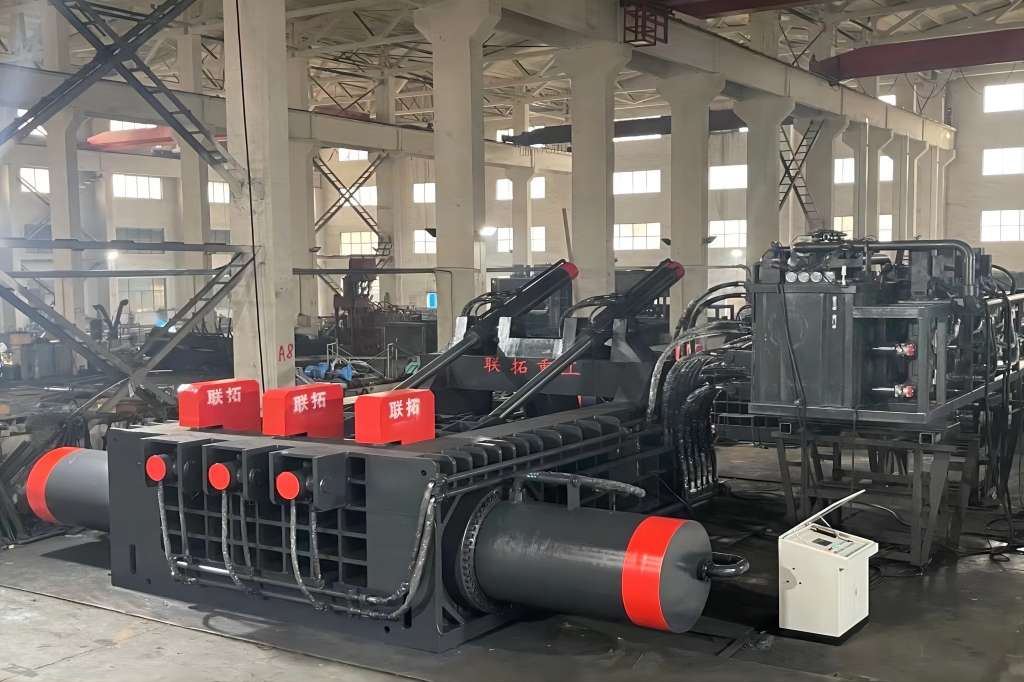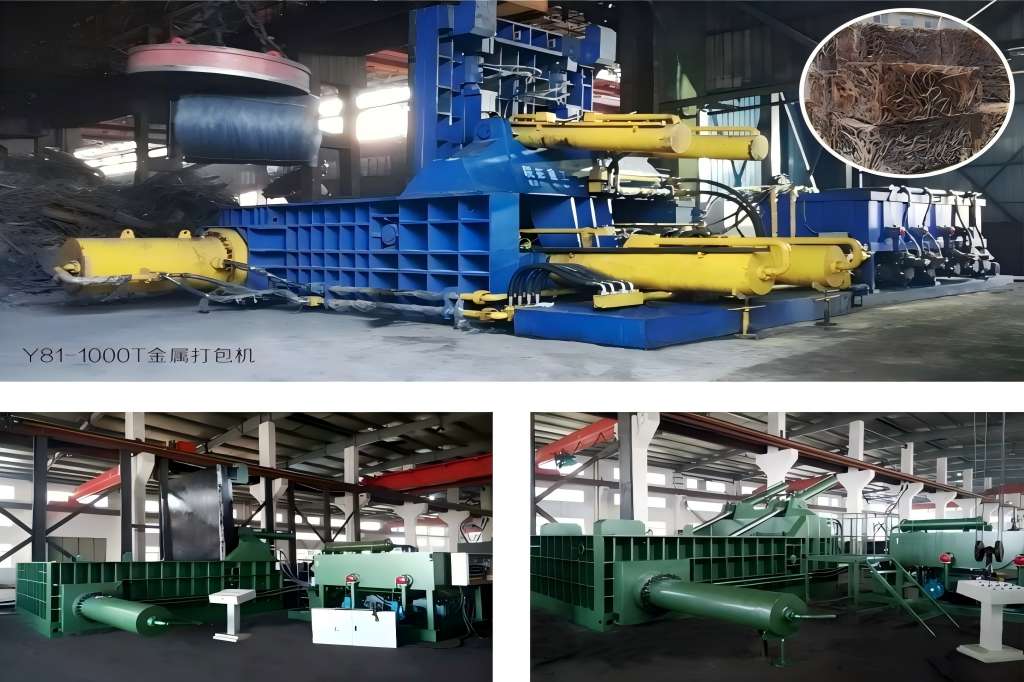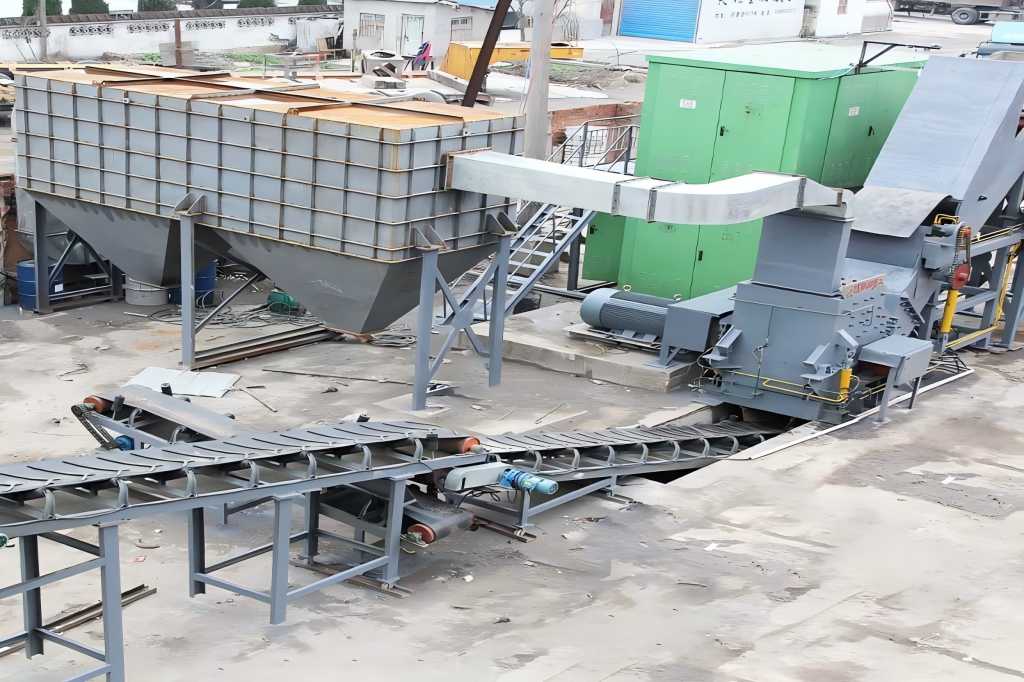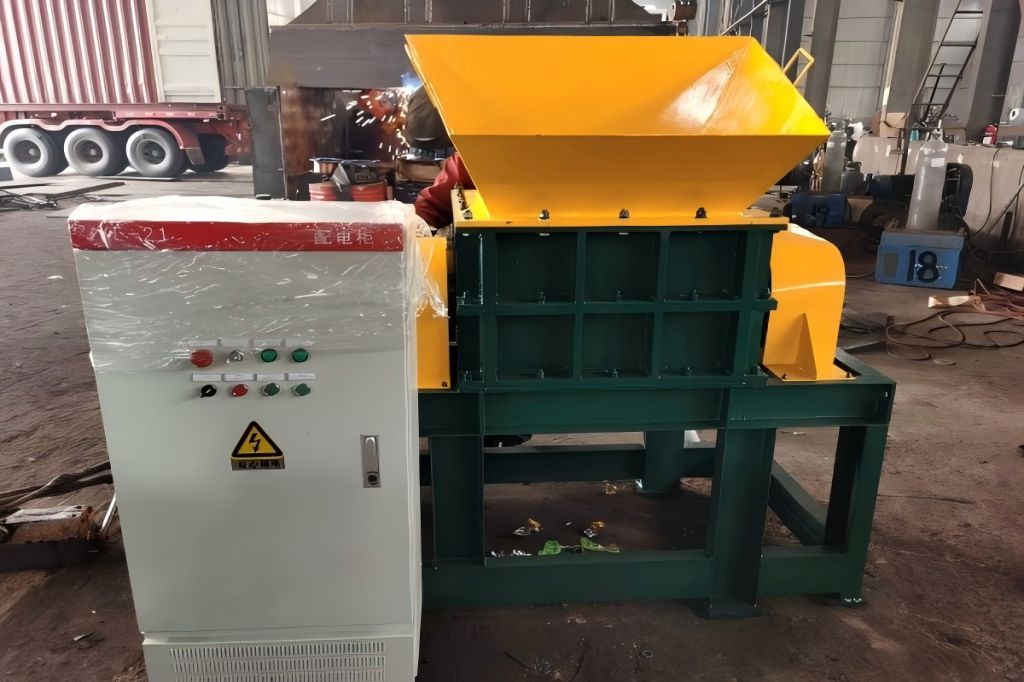Scrap metal balers have become an integral part of operations in recycling facilities, metal processing plants, and waste management facilities. These machines help compress and bundle metal scrap, making handling, transporting, and recycling far easier and more cost-effective.
A well-planned and precise installation of a scrap metal baler is essential to achieve optimal performance, efficiency, and safety.
The installation procedure is thoroughly examined in this tutorial to help guarantee a seamless and efficient setup.
Assessing Facility Needs and Preparing for Installation
Evaluating Your Facility’s Requirements
The first step in installing a scrap metal baler is evaluating the specific needs of your facility. Consider the type and volume of metal scrap produced and your long-term operational goals. Facilities dealing with larger volumes of heavy metals may require high-capacity, heavy-duty balers. Meanwhile, facilities with limited space might benefit from vertical balers, which take up less floor space than horizontal models.
It’s also essential to choose the baler model carefully based on whether automation is required. Automated balers are more efficient and reduce labor demands, though they may come at a higher initial cost.
Planning for Installation Space
Balers are large and heavy machines that require substantial space for operation and maintenance. Before installation, assess the floor plan, ensuring the designated area has adequate space for the baler, maintenance access, and waste input and output flow.
Also, check the structural integrity of the floor, as most balers are weight-intensive and require solid, level flooring to support their operation. Vertical balers, which work well in facilities with limited floor space, may need higher ceiling clearance for effective loading and unloading.
Ensuring Proper Power Supply and Ventilation
Scrap metal balers typically require three-phase power. Consult an electrician to verify the facility’s power capacity, as electrical upgrades may be necessary to accommodate the baler’s energy requirements.
Ventilation is another key factor; balers produce considerable heat during operation, so ensuring the installation area has adequate airflow can help prevent overheating and maintain a safe working environment.
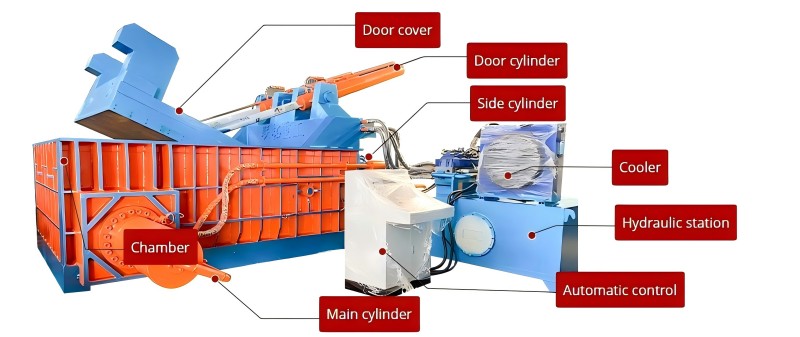
Installation Process: Step-by-Step Guide
Step 1: Delivery and Unloading
The baler’s delivery marks the start of the installation procedure. Because of the machine’s size and weight, specialist tools like cranes or forklifts might be needed for unloading. Ensure that the unloading path is clear and that you have sufficient lifting and moving equipment on hand. Designate a storage area nearby in case assembly cannot begin immediately.
Step 2: Positioning and Anchoring the Baler
After unloading, carefully position the baler in the designated area. Accurate positioning is critical for seamless operation, especially in facilities with high workflow demands. In order to avoid movement while in use, the baler needs to be secured to the ground.
Anchoring typically involves securing bolts or brackets into the floor, ensuring the baler remains stable. Make sure there is enough room for loading, unloading, and maintenance activities in the clear, accessible area surrounding the baler.
Step 3: Assembling the Baler Components
Many balers arrive partially assembled, but additional components such as the hopper, chute, and conveyor may need to be attached on-site. Consult the manufacturer’s assembly guide, as specific assembly requirements vary by model.
Operational problems can be avoided later by using the right tools and carefully following assembly instructions. Qualified technicians should handle this step, as even small alignment errors can affect the machine’s functionality.
Step 4: Connecting Electrical and Hydraulic Systems
Once the baler is physically assembled, it must be connected to the facility’s electrical and hydraulic systems. This process should be conducted by a licensed electrician and a qualified hydraulic technician to ensure safe and efficient operation.
Electrical connections include wiring the baler to the power supply and testing circuit compatibility. Hydraulic systems, integral to most balers’ compression functions, must be connected securely, and technicians should check for potential leaks or pressure inconsistencies.
Step 5: Calibration and Testing
Calibration is crucial to optimizing the baler’s performance. Technicians set the compression force, cycle timing, and safety protocols based on the metal types the facility processes. Initial testing involves running sample loads through the machine to ensure that all systems function as expected.
If any issues arise, adjustments are made immediately to prevent future complications. Testing also includes safety checks, such as ensuring the emergency stop functions correctly and that all moving parts are adequately shielded.
Training and Safety Protocols
Operator Training
For balers to be used safely and effectively, operators must get adequate training. Operators should be familiar with all controls, loading and unloading procedures, and emergency stop functions.
Comprehensive training also includes teaching operators how to troubleshoot basic issues and identify signs of wear or malfunction. Effective training reduces hazards while also increasing production.
Safety Guidelines
Baler operators must follow strict safety guidelines to prevent accidents. Key protocols include:
- Using Personal Protective Equipment (PPE): Goggles, steel-toed boots, and gloves are recommended for operators.
- Frequent Safety Inspections: Operators should check the machine for obvious wear or damage before each usage.
- Emergency Procedures: Operators should know how to activate the baler’s emergency stop system and understand evacuation procedures.
- Restricted Access: To lower the chance of mishaps, the baler should only be accessible to skilled individuals.
Maintenance for Longevity and Performance
Routine maintenance is crucial for prolonging the baler’s life and ensuring it operates at full capacity. Facilities should implement a structured maintenance schedule that includes:
- Daily Inspections: Inspect hydraulic lines, electrical connections, and structural components. Loose bolts and leaks should be addressed immediately.
- Lubrication: By reducing friction, regular lubrication of moving parts may preserve machine performance and avoid premature wear.
- Hydraulic Fluid Checks: Hydraulic balers rely on fluid to generate compression force. Regularly monitor fluid levels, topping up or replacing as necessary.
- Cleaning: Scrap metal balers accumulate metal dust and debris. Cleaning the machine and surrounding area helps prevent blockages and overheating.
- Professional Servicing: Schedule annual or biannual professional inspections. Technicians can catch potential issues early and replace worn parts to prevent unexpected downtime.
Benefits of Installing a Scrap Metal Baler
Operational Efficiency
A scrap metal baler streamlines waste management, reducing the time and labor required to process metal scrap. Facilities can manage higher volumes with less manpower, optimizing productivity. Additionally, compressed metal bales conserve space, which is especially advantageous in establishments with constrained storage spaces.
Environmental Impact
Balers supports environmental sustainability by promoting recycling and reducing landfill waste. Baled metal lowers emissions and transportation costs since it is simpler to carry to recycling plants. Recycling also conserves natural resources, as it minimizes the need for new raw materials.
Cost Savings
Although balers represent a significant upfront investment, they provide long-term cost savings by lowering labor, storage, and transportation expenses. For facilities that process valuable metals like copper or aluminum, balers can also create a revenue stream, as bales can be sold directly to recycling firms.
Addressing Common Installation Challenges
Space Constraints
Limited space can make installation challenging. Facilities with small floor areas may find vertical balers to be the best option. Alternatively, modular systems or customized layouts can help fit balers into compact spaces.
Power Requirements
High-power equipment may strain a facility’s electrical capacity. Work with an electrician to assess the power needs and plan upgrades if necessary. Backup power solutions may also be helpful in case of outages.
Maintenance Demands
Balers require regular maintenance, which can be resource-intensive. Assigning dedicated maintenance personnel or outsourcing services can help facilities manage these demands without disrupting operations.
Final Thoughts
Scrap metal baler installation is a valuable investment for facilities aiming to improve waste management efficiency, reduce environmental impact, and achieve long-term cost savings.
By following a detailed, careful installation process and prioritizing safety and maintenance, facilities can maximize the baler’s benefits. A properly installed system improves the facility’s sustainability and productivity over the course of many years of dependable operation.

